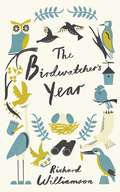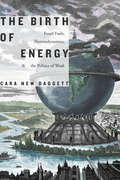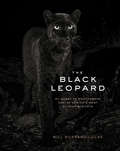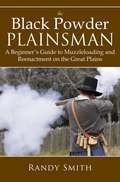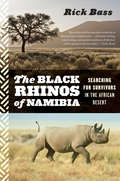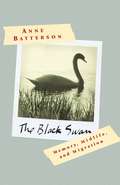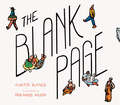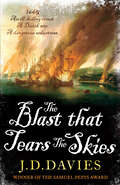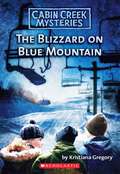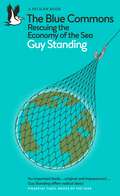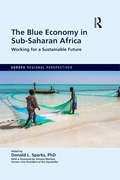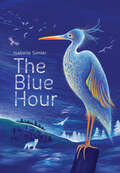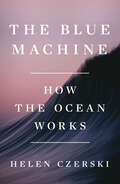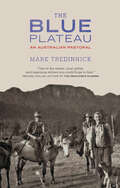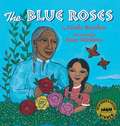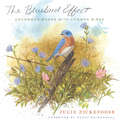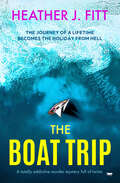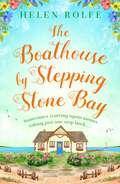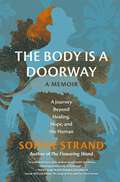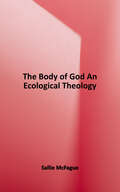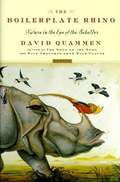- Table View
- List View
The Birdwatcher’s Year
by Richard WilliamsonThis handbook is bursting with tips, facts and folklore to guide you through the birdwatching year. Find out how to identify birds by sight or song; learn about their behaviour, habitats, and breeding and migration habits; and discover how to encourage birds into your garden. Includes handy pages for making your own notes each month.
The Birth of Energy: Fossil Fuels, Thermodynamics, and the Politics of Work (Elements)
by Cara New DaggettIn The Birth of Energy Cara New Daggett traces the genealogy of contemporary notions of energy back to the nineteenth-century science of thermodynamics to challenge the underlying logic that informs today's uses of energy. These early resource-based concepts of power first emerged during the Industrial Revolution and were tightly bound to Western capitalist domination and the politics of industrialized work. As Daggett shows, thermodynamics was deployed as an imperial science to govern fossil fuel use, labor, and colonial expansion, in part through a hierarchical ordering of humans and nonhumans. By systematically excavating the historical connection between energy and work, Daggett argues that only by transforming the politics of work—most notably, the veneration of waged work—will we be able to confront the Anthropocene's energy problem. Substituting one source of energy for another will not ensure a habitable planet; rather, the concepts of energy and work themselves must be decoupled.
The Black Fawn
by Jim KjelgaardA heartbreakingly warm and moving story of a young orphaned boy, sold out of an orphanage to work on a farm, and of his relationship with an equally orphaned black fawn that he one day stumbles upon in the forest. Will their bond survive the many problems that adults pose in their way, such as hunting? A tale with a classic, timeless and universal feel and message to it.
The Black Leopard: My Quest to Photograph One of Africa's Most Elusive Big Cats
by Will Burrard-LucasThis inspiring book tells the story of a photographer's journey to find the mysterious black leopard.There are few creatures as gorgeous and elusive as the black leopard. In Africa, these magnificent cats are so rare as to be the stuff of legend. Will Burrard-Lucas's love for leopards began during his childhood in Tanzania and propelled him into a career as a wildlife photographer. In his quest to create intimate portraits of animals, he developed innovative technology, including a remotely controlled camera buggy and a high quality camera trap system for photographing nocturnal creatures. Then, one day in 2018, he heard about sightings of a young African black leopard in Kenya and with the help of people from the local community, he succeeded in capturing a series of high-quality photographs of the elusive cat. In this compelling and visually stunning book, Burrard-Lucas tells his story of creativity, entrepreneurship, and passion for wild animals, alongside awe-inspiring images of lions, elephants, and the black leopard itself.• STAR WILDLIFE PHOTOGRAPHER: Will Burrard-Lucas's passion for nature and expertise in camera technology have earned him coverage from National Geographic, The New York Times, and the BBC—and over 1 million fans enjoy his breathtaking work online.• NATURE'S HIDDEN WONDERS: Black leopards are individual animals in whom a gene mutation results in excess melanin and an elegant black coat. Most are found in Southeast Asia, where lush vegetation offers them camouflage. In the semiarid shrub lands of Africa, black leopards are extraordinarily rare. Burrard-Lucas's images—showing these beautiful creatures prowling their territory under cover of night—are vivid reminders of nature's hidden wonders.• INCREDIBLE STORY: This is an adventure story that takes place in remote and wild corners of Africa. It reveals Burrard-Lucas's devotion, vision, and innovation that led to him capturing photos that are not only incredibly rare, but also breathtakingly beautiful.Perfect for:• Aspiring and professional photographers• Photography buffs• Nature and animal lovers• Big cat enthusiasts• Conservationists• National Geographic readers• Fans of memoir and adventure stories• Travelers to Eastern and Southern Africa
The Black Powder Plainsman: A Beginner's Guide to Muzzleloading and Reenactment on the Great Plains
by Randy SmithThe Black Powder Plainsman provides a wealth of information on muzzleloading and the history of the Plainsmen. The author explores the lives and roles of women, Plainsmen relations with the Native Americans, and the current status of the hobby of muzzleloading, along with many other topics. He also shares advice on how to get involved in historical reenactments and how to preserve the values of the early Plainsmen. Hunting techniques with muzzleloading rifles are also explored.
The Black Rhinos of Namibia
by Rick BassFrom one of our most gifted writers on the natural world comes a stunning exploration of a unique landscape and the improbable and endangered animal that makes its home there.Rick Bass first made a name for himself as a writer and seeker of rare, iconic animals, including the grizzlies and wolves of the American West. Now he's off on a new, far-flung adventure in the Namib of southwest Africa on the trail of another fascinating, vulnerable species. The black rhino is a three-thousand-pound, squinty-eyed giant that sports three-foot-long dagger horns, lives off poisonous plants, and goes for days without water.Human intervention and cutting-edge conservation saved the rhinos--for now--from the brink of extinction brought on by poaching and war. Against the backdrop of one of the most ancient and harshest terrains on earth, Bass, with his characteristic insight and grace, probes the complex relationship between humans and nature and meditates on our role as both destroyer and savior.In the tradition of Peter Matthiessen's The Tree Where Man Was Born, Bass captures a haunting slice of Africa, especially of the "black" rhinos that glow ghostly white in the gleaming sun.
The Black Swan
by Anne BattersonSet against a spontaneous cross-country road trip following the migrating birds, this passionate, lyrical memoir is one woman's reflections on midlife, her important personal relationships, her kaleidoscopic past, and her uncertain future. To fifty-six-year-old Anne Batterson, a woman whose life has been filled with adventure -- as a commercial pilot, an international skydiving champion, a trekking guide in Nepal -- her husband's decision to retire felt like a death sentence. Yearning for some way to reconcile herself to the future that was rapidly unfolding before her, she packed up her VW camper and hit the road with maps, bird guides, and little else except the desire to follow the fall migration and the bone-deep hunch that birds had something important to teach her. In this beautifully written narrative of that extraordinary trip, Batterson writes movingly not only about her experiences with the birds but also about the people she loves, has lost, and connects with along the way. Events from the present trigger vivid stories from the past. In the chapter "The Journey Within the Journey," a long, lonely night in a deserted campground in Virginia conjures up the ghosts of a desperate solo road trip she made when she was twenty-one. A towering cumulus cloud in Illinois brings back a breathtaking free fall into a similar cloud in "My Time as a Bird. " An encounter with a great blue heron summons a compelling account of her mother's last afternoon in the world. "Bears in the Woods" describes a run-in with twoDeliverance-type men in West Virginia, which brings back the murder of a dear friend in the woods of Connecticut. By the end of the journey, the ghosts of the past, like the author herself, have become part of a more fluid, more spiritual reality -- wild and spare and elegant and timeless -- one that is always out there, "quickening on the far side of reality. "A unique mix of memoir and nature writing,The Black Swanis a charming story of a woman's odyssey.
The Blackbird's Song & Other Wonders of Nature: A year-round guide to connecting with the natural world
by Miles Richardson'A wonderful "rough guide" to the planet we live on... Read it and pass it on as a gift of love from you to those around you so they can learn to feel comfortable in their own skins and ultimately, be happy.' ― Sir Tim Smit, The Eden Project An almanac, focused on reconnecting with the great outdoors for the benefit of both us and nature.Each month in The Blackbird's Song, Miles Richardson delves into the science and mythology behind our relationship with nature, exploring everything from our kinship with plants to the way in which nature influences our moods.Along the way, he offers a range of activities to help us access the benefits of the natural world.Whether it be 'joy-watching' birds, rediscovering wonder, foraging for Christmas crafts or going on an urban safari, this book contains all the tools and inspiration you need to unlock the transformative power of nature and find real meaning in your life.
The Blank Page: How a Piece of Paper Connects to Everything
by Alberto BlancoIs a blank page really blank? Beloved poet Alberto Blanco pulls back the curtain and illuminates all of the elements hidden in a single piece of paper: the tree it was made from, the rain and sun that allowed the tree to grow, and the people that created it. An enlightening read for readers young and old, it soon becomes clear that a blank page contains the whole cosmos.In The Blank Page, world-renowned Mexican poet Alberto Blanco inspires children and adults to keep looking deeper, to never take things at face value. Charming illustrations by Rob Moss Wilson portray a world that slowly comes to life in a single sheet of paper: first the tree, then the forest, then the people are discovered, revealing the whole interrelated ecosystem of our world. As Blanco says: "Where nothing happens, there is a miracle we are not seeing."
The Blast that Tears the Skies (The Matthew Quinton Journals)
by J. D. DaviesPart of an &“excellent series&” of nautical sagas, a Royal Navy captain commands a challenging warship as England enters the Anglo-Dutch wars&” (Publishers Weekly). 1665: plague stalks the streets of London, the country is at war, and conspiracies against King Charles II are rife. When given command of a vast and ancient Man-of-War, Captain Matthew Quinton finds himself thrust unexpectedly into the midst of the deadliest of these plots . . . Grappling with scheming ministers and a rebellious crew, Quinton must sail his &“cursed&” ship against the might of the Dutch fleet. Embroiled in the epic Battle of Lowestoft, one of the greatest conflicts fought at sea, he must pull his crew together, and fight for his life. But in a shattering conclusion, he must face a terrible family secret that will push him to the limits . . .The Blast that Tears the Skies is the riveting third book in the Matthew Quinton Journals nautical adventures. Praise for the writing of J. D. Davies: &“Hornblower, Aubrey and Quinton—a pantheon of the best adventures at sea!&” —Conn Iggulden, #1 New York Times–bestselling author of The Conqueror and War of the Roses series &“A hero worth rooting for.&” —Publishers Weekly &“Utterly impossible to put down . . . Finely-shaded characters, excellent plotting, gut-clenching action and immaculate attention to period detail . . . Superb.&” —Angus Donald, author of The Outlaw Chronicles series &“Destined to be a classic of nautical adventure series.&” —Eric Jay Dolin, author of Leviathan and Fur, Fortune, and Empire &“A naval adventure that goes well beyond the usual outlines of the genre to paint a lively portrait of England in the 1600s.&” —Kirkus Reviews
The Blizzard on Blue Mountain (Cabin Creek Mysteries)
by Kristiana GregoryIn Cabin Creek, winter means sledding, ice skating, snow boarding and a broken ski lift? A blizzard has blown into town and tourists are filling up the lodge to hit the slopes, which means there are all the more suspects in the cousins' latest case.
The Blue Bear
by Lynn schoolerHis body twisted by adolescent scoliosis, Lynn Schooler's soul was scarred from the loneliness of someone who, at an early age, stood 'at a strange angle to the rest of the world'. He made a life on the slim crescent of remote Alaskan coastline surrounding the city of Juneau, a place where he was least likely to encounter people. In 1990, celebrated Japanese photographer Michio Hoshino hired Schooler to help him shoot a segment on humpback whales in Glacier Bay, and the two formed a profound friendship. Their conversations often revolved around the glacier bear (known as the blue bear for its unique granite-coloured fur), a nearly extinct creature so rare that it is shrouded in legend. Together the two men became obsessed with finding the animal, every year searching through Ice-Age vistas to capture the blue bear on film. Their obsession cost Hoshino his life when he was killed by a grizzly bear - but alone in the eighth year, Schooler finally found and photographed the elusive creature.
The Blue Commons: Rescuing the Economy of the Sea (Pelican Books)
by Guy StandingA FINANCIAL TIMES BEST ECONOMICS BOOK OF 2022 'A landmark book... The Blue Commons is at once a brilliant synthesis, a searing analysis, and an inspiring call to action.' - David Bollier'With remarkable erudition, passion and lyricism, Guy Standing commands the reader to wake up to the threat posed by rentier capitalism's violent policies for extraction, exploitation and depletion of that which is both common to us all, but also vital to our survival: the sea and all within it.' - Ann Pettifor 'Shines a bright light on the economy of the oceans, directing us brilliantly towards where a sustainable future lies.' - Danny Dorling'This is a powerful, visionary book - essential reading for all who yearn for a better world.' - Jason HickelThe sea provides more than half the oxygen we breathe, food for billions of people and livelihoods for hundreds of millions. But giant corporations are plundering the world's oceans, aided by global finance and complicit states, following the neoliberal maxim of Blue Growth. The situation is dire: rampant exploitation and corruption now drive all aspects of the ocean economy, destroying communities, intensifying inequalities, and driving fish populations and other ocean life towards extinction.The Blue Commons is an urgent call for change, from a campaigning economist responsible for some of the most innovative solutions to inequality of recent times. From large nations bullying smaller nations into giving up eco-friendly fishing policies to the profiteering by the Crown Estate in commandeering much of the British seabed, the scale of the global problem is synthesised here for the first time, as well as a toolkit for all of us to rise up and tackle it.The oceans have been left out of calls for a Green New Deal but must be at the centre of the fight against climate change. How do we do it? By building a Blue Commons alternative: a transformative worldview and new set of proposals that prioritise the historic rights of local communities, the wellbeing of all people and, with it, the health of our oceans.
The Blue Economy in Sub-Saharan Africa: Working for a Sustainable Future (Europa Regional Perspectives)
by Donald L. SparksThe blue economy, comprising coastal and marine resources, offers vast benefits for sub-Saharan Africa: of the 53 countries and territories in the region, 32 are coastal states; there are 13 million sq km of maritime zones; more than 90% of the region’s exports and imports come by sea; and the African Union hails the blue economy as the ‘new frontier of African renaissance’. Despite their importance, the region’s coastal and marine resources have been neither fully appreciated nor fully utilized. They are only now being recognized as being key to Africa’s potential prosperity. As the region grows, it has, in general, not taken adequate safeguards to protect these valuable resources. That is partly because some of the problems (pollution, for example) are regional and know no borders. All too often, short-term gains are made at the expense of the long term (overfishing, for example). This book provides, for the first time, a study of the constraints and opportunities the blue economy offers for sub-Saharan Africa. It includes an introduction and overview; sectoral analyses (including tourism, fisheries, mineral resources, culture, shipping and maritime safety); country case studies; and analyses of regional and international efforts towards better coastal zone and marine management.
The Blue Hour
by Isabelle SimlerA lovely and tranquil celebration of natureThe sun has set, the day has ended, but the night hasn't quite arrived yet. This magical twilight is known as the blue hour. Everything in nature—sky, water, flowers, birds, foxes—comes together in a symphony of blue to celebrate the merging of night and day. With its soothing text and radiant artwork, this elegant picture book displays the majesty of nature and reminds readers that beauty is fleeting but also worth savoring.
The Blue Machine: How The Ocean Works
by Helen CzerskiA Financial Times Best Science Book of 2023 “[A] profound, sparkling global ocean voyage.” —Andrew Robinson, Nature A scientist’s exploration of the "ocean engine"—the physics behind the ocean’s systems—and why it matters. All of Earth’s oceans, from the equator to the poles, are a single engine powered by sunlight, driving huge flows of energy, water, life, and raw materials. In The Blue Machine, physicist and oceanographer Helen Czerski illustrates the mechanisms behind this defining feature of our planet, voyaging from the depths of the ocean floor to tropical coral reefs, estuaries that feed into shallow coastal seas, and Arctic ice floes. Through stories of history, culture, and animals, she explains how water temperature, salinity, gravity, and the movement of Earth’s tectonic plates all interact in a complex dance, supporting life at the smallest scale—plankton—and the largest—giant sea turtles, whales, humankind. From the ancient Polynesians who navigated the Pacific by reading the waves, to permanent residents of the deep such as the Greenland shark that can live for hundreds of years, she introduces the messengers, passengers, and voyagers that rely on interlinked systems of vast currents, invisible ocean walls, and underwater waterfalls. Most important, however, Czerski reveals that while the ocean engine has sustained us for thousands of years, today it is faced with urgent threats. By understanding how the ocean works, and its essential role in our global system, we can learn how to protect our blue machine. Timely, elegant, and passionately argued, The Blue Machine presents a fresh perspective on what it means to be a citizen of an ocean planet.
The Blue Plateau: An Australian Pastoral
by Mark TredinnickThe author of The Land’s Wild Music depicts Australia’s Blue Mountains through stories of the land and the lives within it.At the farthest extent of Australia’s Blue Mountains, on the threshold of the country’s arid interior, the Blue Plateau reveals the vagaries of a hanging climate: the droughts last longer, the seasons change less, and the wildfires burn hotter and more often. In The Blue Plateau, Mark Tredinnick tries to learn what it means to fall in love with a home that is falling away.A landscape memoir in the richest sense, Tredinnick’s story reveals as much about this contrary collection of canyons and ancient rivers, cow paddocks and wild eucalyptus forests as it does about the myriad generations who struggled to remain in the valley they loved. It captures the essence of a wilderness beyond subjugation, the spirit of a people just barely beyond defeat. Charting a lithology of indigenous presence, faltering settlers, failing ranches, floods, tragedy, and joy that the place constantly warps and erodes, The Blue Plateau reminds us that, though we may change the landscape around us, it works at us inexorably, with wind and water, heat and cold, altering who and what we are.The result is an intimate and illuminating portrayal of tenacity, love, grief, and belonging. In the tradition of James Galvin, William Least Heat-Moon, and Annie Dillard, Tredinnick plumbs the depths of people’s relationship to a world in transition.Praise for The Blue Plateau“One of the wisest, most gifted and ingenious writers you could hope to find.” —Michael Pollan, author of In Defense of Food and The Omnivore’s Dilemma“I’ve never been to Australia, but now—after this book—it comes up in my dreams. The landscape in the language of this work is alive and conscious, and Tredinnick channels it in prose both wild and inspired. . . . Part nonfiction novel, part classic pastoral, part nature elegy, part natural history, the whole of The Blue Plateau conveys a deep sense, rooted in the very syntax of a lush prose about an austere land, that there can be no meaningful division between nature and culture, between humans and all the other life that interdepends with us, not in the backcountry of southeastern Australia, nor anywhere else.” —Orion“Absorbed slowly, as a pastoral landscape of loss and experiment in seeing and listening, the book richly rewards that patience.” —Publishers Weekly
The Blue Roses
by Linda BoydenA Native American girl gardens with her grandfather, who helps to raise her, and learns about life and loss when he dies, and then speaks to her from a dream where he is surrounded by blue roses.
The Bluebird Effect
by Julie ZickefooseJulie Zickefoose lives for the moment when a wild, free living bird that she has raised or rehabilitated comes back to visit her; their eyes meet and they share a spark of understanding. Her reward for the grueling work of rescuing birds--such as feeding baby hummingbirds every twenty minutes all day long--is her empathy with them and the satisfaction of knowing the world is a birdier and more beautiful place.The Bluebird Effect is about the change that's set in motion by one single act, such as saving an injured bluebird--or a hummingbird, swift, or phoebe. Each of the twenty five chapters covers a different species, and many depict an individual bird, each with its own personality, habits, and quirks. And each chapter is illustrated with Zickefoose's stunning watercolor paintings and drawings. Not just individual tales about the trials and triumphs of raising birds, The Bluebird Effect mixes humor, natural history, and memoir to give readers an intimate story of a life lived among wild birds.
The Boat Trip: A totally addictive murder mystery full of twists
by Heather J FittIn this brand-new murder mystery by the author of The Flight, a yacht crosses the North Atlantic while a perfect storm of suspicion and vengeance develops onboard . . .Duchess is about to set sail from Scotland to St. Lucia. But before she even leaves port, an argument erupts. It&’s only the first in a series of unsettling events that will beset Helen, the skipper, her best friend, and the remaining crew. During a port of call in the Canary Islands, tensions mount further when an unexpected guest joins the crew. Then, a near-fatal allergic reaction raises the pressure level—and finally, during a fierce storm, someone goes overboard . . . Is this a run of bad luck or is one person at the heart of the turmoil and violence? And if so, can the culprit be identified before they reach the Caribbean?
The Boathouse by Stepping Stone Bay
by Helen Rolfe'Comforting and uplifting, this book is a joy to read' - MY WEEKLY, on The Farmhouse of Second ChancesSun, sand and secrets at the bay!As a kid, Nina O'Brien spent all her summers at her grandparents' cabin by the beach at Stepping Stone Bay. Long, sunny days full of fun and laughter with her best friends, Leo, Adrian, and Maeve, her friendship with Leo slowly blossoming into love. Until one fateful night changed everything for them all... Twelve years later, Nina must return to the bay to renovate the old cabin and pass it on to a new owner. But not only does Leo still live in the cabin next door, he works at his family's boathouse right there in the bay. As they begin to work through their differences and what happened all those years ago, can Nina really walk away from him twice? Maeve has finally returned home to face the past. Her eleven-year-old son, Jonah, loves the sea, unlike Maeve who is terrified of it. But she knows she can't keep Jonah away from the sea or the truth forever..A heartwarming and uplifting story about second chances and facing the secrets of the past. Perfect for fans of Philippa Ashley, Holly Martin and Ali McNamara. Readers adore Helen's heartwarming storytelling'Enchanting... Employing all the warmth and charm of Maeve Binchy, and a special brand of kindness that she has made her own, Rolfe weaves together elements of mystery, romance, family relationships and the warmth of community in a story guaranteed to bring laughter, tears and miles of smiles' Lancashire Post'A warm, comforting tale of family and community which brims with kindness and love' Annie Lyons'A heartwarming story about family, forgiveness and the importance of kindness... If you're looking for a feelgood novel in these difficult times, this is definitely it!' Fiona Harper'A lovely community, full of friendship and love''I enjoyed every minute of this book and found it very hard to put down''Lovely, feel-good...filled with lots of love''Gave you all the emotions: suspense, happiness and excitement''Helen Rolfe's writing brought a smile to my face''Loved loved loved this fabulous book'
The Boatman: Henry David Theoreau's River Years
by Robert M. ThorsonRobert Thorson gives readers a Thoreau for the Anthropocene. The boatman and backyard naturalist was keenly aware of the way humans had altered the waterways and meadows of his beloved Concord River Valley. Yet he sought out for solace and pleasure those river sites most dramatically altered by human invention and intervention—for better and worse.
The Body Is a Doorway: A Journey Beyond Healing, Hope, and the Human
by Sophie StrandA LIT HUB MOST ANTICIPATED BOOK OF 2025 In this lyrical, radically expansive self-portrait, celebrated poet, author, and lecturer Sophie Strand explores—with searing insight and honesty—the intersecting spaces of her own chronic illness, the complex ecology of a changing world, and the very nature of the stories we tell ourselves. At age sixteen Sophie Strand—bright, agile, fearless—is suddenly beset by unexplained, debilitating illness while on a family trip abroad. Her once vibrant life becomes a tangled miasma of medication, specialists, anaphylaxis, and seemingly never-ending attempts to explain what has gone so terribly wrong. And, for many years thereafter, Sophie's life becomes subsumed with ideas not of "health," but of explanation, and the narrative of how and why she became sick. But slowly, through both profound fatigue with the medical industrial complex and a deeply entwined relationship with the natural world, she comes to another, more fundamental understanding of what has happened to her body. What if sickness is not a separation from the body? What if health is not quite so easy to see? What if physical pain leaves us no choice but to return to our bodies, the pinpricks and lightning of illness stitching us back into a physical presence our society has taught us to ignore? In a work both expansively tender and shockingly frank, Sophie Strand offers readers a window onto her own winding journey through the maze of chronic illness—a web not unlike those created by the mycorrizhal fungi whose networks she begins to see as a metaphor for the profound connections between all species and the earth. Grounded deeply in the mountains of the Hudson Valley, each moment of this far-reaching narrative snakes its way through the multi-layered ecology of the land around us, from the stunningly powerful pollen of a phlox plant to the unexpected beauty and wisdom of the woodchuck. The Body Is a Doorway dives into the murky waters of sickness and trauma, as well as the resonant challenges and joys of friendship, young adulthood, first love, and fertility. Throughout, in precise, sparkling language, it explores questions both personal and universal: Is there healing beyond the human? Beyond the hope for a cure or a happy ending? Is there something wilder and more symbiotic beyond narrow ideas of well-being?
The Body of God: An Ecological Theology
by Sallie McFagueAward-winning theologian Sallie McFague here develops a striking and novel vision of the universe, one that takes seriously and radically both contemporary science and the incarnational commitments of the Christian tradition.
The Boilerplate Rhino: Nature in the Eye of the Beholder
by David QuammenThe author hailed by Edward O. Wilson as "a brilliant young star of nature writing" explores the relationship between humans and the natural world in a collection of essays culled from his popular "Outside" magazine column.
